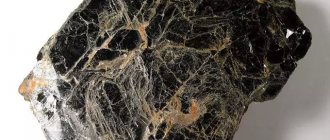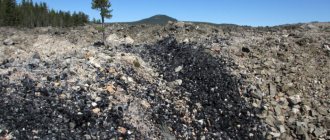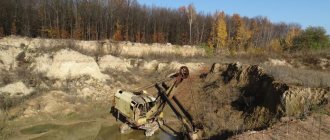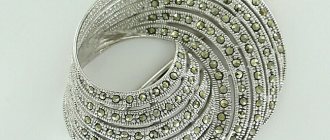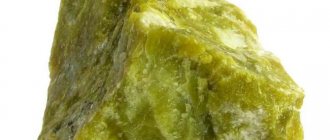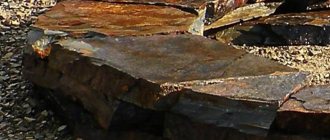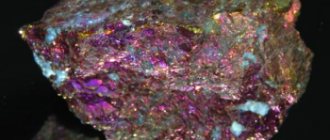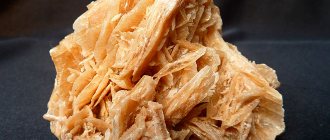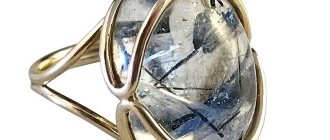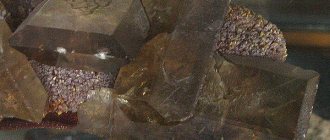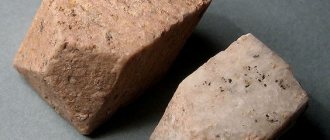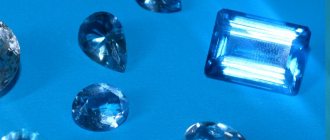Stones for us are not only luxury items, but also protectors and helpers. There are legends and beliefs about them, healing and magical properties are attributed to them, they are shrouded in secrets and riddles. Each has its own story, the love of jewelers and mediums. Serpentine is one of those minerals that are credited with unique properties that are feared and respected at the same time.
A little history
In Europe, serpentinite stone was first discovered in the 16th century. First of all, it was of interest to craftsmen as a finishing and ornamental material. Tabletops, dishes, watches were made from it, and weapons were decorated with it. At a low cost, it had a spectacular appearance. Such luxury was available to anyone from aristocrats to ordinary citizens. Later, pharmacists began to actively use the stone to make mortars, pestles and other devices. Occultists discovered powerful magical properties in it.
Based on the results of archaeological excavations, it became clear that Europeans were not the discoverers of serpentinite. Talismans and jewelry with stones were found in the tombs of the Mayan and Incas. Serpentinite has also been popular in the East since time immemorial. The fact is that this stone is very similar to jade and jadeite, which only rulers and nobility could wear. And jewelry with a coil was available to everyone.
Historical reference
The history of the coil goes back more than 5 thousand years, it is interesting and informative. Europe became acquainted with the stone only 400 years ago. The mineral was used to make various stands, interior elements and other products.
The appearance of the serpentine in the tales of P. P. Bazhov is interpreted differently. They say that the green stone placers are frozen pieces of the shed skin of the Great Snake. Ural craftsmen made various souvenirs and ring inserts from pliable stone. The Americans made amulets from it, the Chinese successfully passed it off as jadeite.
The Russians called the mineral serpentine, translated from Latin “serpens” - snake. Other names:
- serpentine (it);
- toligor;
- flywheel;
- noble ophite;
- antigorite;
- apothecary stone;
- mountain flax;
- Korean jade
Deposits of the mineral have been found in Germany, the USA, India, Italy and many Asian countries.
Characteristics of the stone
Serpentinite is a dense rock interspersed with fine crystalline fibers, which is formed as a result of igneous metamorphism, which is characterized by a high magnesium content. The composition is represented by the following main substances:
- minerals of the serpentine group;
- carbonates;
- grenades;
- olivines;
- pyroxenes;
- amphiboles;
- talc;
- magnetites;
- chromites;
- and so on.
The stone has a smooth surface and massive texture. The surface is rough, but can be polished well and has a mirror shine. Despite its apparent strength, the hardness on the Moss scale is only 4, and therefore the pebble is susceptible to damage.
Large deposits of serpentine are found in the western United States, Great Britain, Germany, Switzerland and Poland. One of the leaders in serpentinite mining is Russia. The largest deposits are developed in the Caucasus and the Urals. It is quite simple to extract the serpentine, because it lies in large layers. This determines the relatively low cost of the stone.
Place of Birth
Serpentinites are widespread in various regions of the world.
Serpentinite massifs are widespread throughout the Urals, the North Caucasus, Siberia, Koryakia, Armenia, Kazakhstan; in Germany, pyrope serpentinites near Sebnitz and Ansprung in the Ore Mountains, in the Saxon Granulite Mountains (Dresden, Karl-Marx-Stadt, Leipzig districts), garnet (pyrope) and bronzite serpentinites near Waldheim, garnet (pyrope) serpentinites near Börigen, bronzite serpentinites in in the vicinity of Hohenstein-Ernstthal, Waldenburg, Kuschnappel; in the Fichtel Mountains and in the vicinity of Wurlitz.
Varieties
Depending on the chemical composition of serpentinite and the presence of certain impurities in it, there are several types of stones that differ in color, texture and pattern. Here are some of them:
- Verdantite is dark green with silver veins.
- Bowenite is pale green, slightly translucent.
- Williamsite is green-blue, slightly shimmering like a cat's eye.
- Ophicalcite (serpentinite marble) - has characteristic spots and streaks reminiscent of a marble surface.
- Noble serpentine - yellow-green or white-green with black specks. May show through on thin chips.
- Ricolite is yellow-green with a striped pattern.
- Retinolite - honey yellow. Has an attractive resinous luster.
Form of being in nature
The appearance of crystals. Crystals are known from only one variety - antigorite. Crystal shape. Fibrous (chrysotile), leafy (antigorite).
Aggregates. Serpentine is usually distributed in dense masses, often crushed, with traces of sliding, sometimes with thin veins of chrysotile asbestos or ophite veins. In antigorite serpentinites, a lamellar structure is often observed by eye. Lizardite is more characterized by cryptocrystalline varieties (ophite), however, in most serpentine aggregates both minerals are present in different proportions.
Scope of application
Serpentine is a very beautiful and versatile stone, and therefore its scope of application is quite wide. The stone is easy to cut and polish, and therefore it is used in the manufacture of jewelry. The original texture of the coil is a real find for carvers, who can create beautiful interior items and souvenirs from stone.
Serpentinite stone is also a popular finishing material. For baths, saunas, swimming pools, bathrooms, aquariums. This stone is even present in the design of some metro stations in the capital. Coil crumbs are used to effectively design garden paths.
Serpentine classification
There are many varieties of this stone and they all differ in color, pattern and texture. The main and most popular varieties of the mineral are considered to be:
- Chrysotiles. They got their name from two Greek words “chrysos”, which means gold, and “tilos” - fiber. They have a leafy or fibrous structure and high strength. They belong to magnesium phyllosilicates. They have found their application in production (asbestos), they are an integral part of heat-insulating non-combustible materials and textiles, various fillers in the production of plastics and cement.
- Antigorites. The origin of their name is closely related to the mountains of Italy, where they were first found. They can be brown and gray, yellow and green in color. It is mainly used as an ornamental stone for the manufacture of decorative items and design works. High quality specimens are highly valued by jewelers and are used to create jewelry. Processing occurs in the form of a cabochon. Particularly beautiful representatives are cut and inserted into various jewelry: bracelets, rings, pendants. Picrolite is one of the translucent forms of antigorite, has a cat's eye effect.
Among the Serpentines there are also:
- Ophites, the so-called noble serpentines, which have lighter tones, translucency, and a waxy sheen. Color range: from yellowish to greenish. If we are talking about bluish or bright green specimens, then they are called Williamsites. There are white-green specimens. The color can be uniform or with black splashes. Somewhat reminiscent of jade;
- Bowenites are so called because the name of their discoverer was George Bowen. Although at the very beginning he confused them with jades, he later found clear differences between these two minerals. Sometimes Bowenites are called Bowen jades, since they are similar in appearance. These stones are the hardest of the entire Serpentine group, their cost is comparable to other precious stones. People sometimes call them precious serpentines. This gem is highly polished, so it is very popular among carvers. Officially, since 1966, this stone has been considered the symbol of Rhode Island;
- verdantites are a rather beautiful natural stone of dark green color with calcite veins;
- ophicalcite (or serpentine marble) - a coil covered with dolomite or calcite spots;
- satepites have a cat's eye effect, shimmer in the light, and have a fibrous structure;
- lizardites. They were first discovered in Lizard (England), where the name came from. They are scaly, fine-grained, transparent crystals with green, yellow, and white colors. They are most used in the creation of household items and souvenirs;
- ricolites - striped specimens of green, yellow and gray colors with beautiful stripes;
- Porcellophytes are similar in appearance to porcelain and have an opaque green tint.
If we take into account the mineral composition, then serpentine varieties include chrysotile, antigorite, garnet, and bronzite coils.
Chemical composition
The chemical formula of Serpentine looks like this: Mg6[Si4O10][OH]8 or 3MgO*2SiO2*2H2O. This mineral contains magnesium (42%), silicon oxide (45%), water (17%). In small quantities there are impurities such as nickel, iron, aluminum. The presence of natural inclusions in the form of iron or magnetite grains contributes to the formation of a magnetic property in the mineral. When a stone gets into hydrochloric or sulfuric acid, it easily dissolves.
| Basic physical properties | |
| singonia | monoclinic |
| Hardness | 2,5 – 3,5 |
| Cleavage | perfect |
| Density g/cm3 | 2.6 |
| Specific gravity | 2,5 – 2,7 |
| IMA class | silicates |
| Selection form | masses of leafy (antigorite) or fibrous (chrysolite) type, cryptocrystalline aggregates |
| Kink | uneven, conchoidal, smooth |
| Fragility | Yes |
| Softness | significant |
Mineral deposits
The process of formation of Serpentine is associated with the metamorphosing effect on igneous rocks, the main components of which are pyroxenes and olivines, as well as water that rises from magma chambers and cools the rocks. Olivine and pyroxene-containing rocks, after weathering and interaction with waters rich in silica and carbon dioxide, give rise to Serpentine. But if Serpentine is constantly exposed to carbon dioxide water, then over time it will collapse and become chalcedony, limonite, opal and magnesite.
Serpentine deposits are found where rocks rich in asbestos are mined. These are the Urals, the North Caucasus, Transbaikalia. They know about these minerals in Kazakhstan, Afghanistan and the USA. But there are other places on the planet where this mineral is mined. This applies to Germany, Canada, Italy, China, New Zealand, India, Mongolia, Colombia. Great Britain, Tajikistan, Armenia and Azerbaijan can also boast of industrial production volumes.
Healing properties
The healing properties of serpentinite stone are highly valued by lithotherapists. Here's how a coil is useful:
- dulls headaches and eliminates dizziness;
- accelerates the healing of bone fractures;
- imparts vigor and vitality, fights chronic fatigue and loss of strength;
- supports normal functioning of the liver and spleen;
- normalizes the functioning of the gastrointestinal tract;
- fights stress and depression;
- promotes rapid recovery from colds;
- normalizes blood pressure;
- suppresses inflammatory processes in the body.
Several centuries ago, pharmacists and alchemists believed that serpentinite could enhance the healing properties of medicines, so they prepared them using mortars and pestles made from serpentine. Therefore, it would be wise to put a pebble in your home medicine cabinet.
Jewelry for healing
The healing properties of serpentinite stone can be revealed in different ways, depending on the type of jewelry it is set into:
- If you suffer from frequent headaches, high blood pressure and migraines, you should wear earrings with a coil. Decoration also prevents hearing loss.
- People suffering from increased bone fragility should wear bracelets and rings with serpentinite. Jewelry will protect you from fractures and dislocations, and will also speed up the healing of damaged tissue.
- Those who suffer from frequent colds, as well as bronchitis, tonsillitis and sinusitis are recommended to wear beads or pendants with a coil. And such decoration also has a beneficial effect on the functioning of the heart.
Please note that serpentinite is not suitable for constant wear. Wear jewelry two to three times a week or during periods of exacerbation of illnesses. With prolonged contact with the body, the coil can return accumulated negativity to a person.
Cleansing a stone from negativity
Jewelry with a serpentine insert is not recommended to be worn constantly. The stone absorbs negative energy, absorbing not only the negativity of the owner, but also the people around him. Therefore, serpentine needs regular cleansing.
This is not difficult to do; just hold the mineral under running water for 20-30 minutes. Negative energy does not dissolve in stagnant water; it can only be removed by a running water stream, which will take away all the negative energy. Dry the stone naturally.
Magic properties
The magical properties of serpentinite are few, but very significant. Here are the main ones:
- awakens the ability to clairvoyance and extrasensory perception;
- promotes self-development and self-realization;
- helps you find the right path in life;
- helps to recognize people's true intentions;
- protects from other people's negative energy and black magic.
From a magical point of view, serpentinite is a fairly strong stone, but it can also be dangerous. If its owner succumbs to bad thoughts and does something bad, the stone can severely punish him. We can talk about both banal everyday troubles and life-threatening situations. Therefore, you should not contact serpentinite on days when you are upset or angry with someone.
Composition and crystal structure
Serpentine is a group name for minerals that are similar in chemical composition and structure, belonging to the subclass of layered silicates. The general formula of serpentines is X3[Si2O5](OH)4, where X is magnesium Mg, di- or trivalent iron Fe2+, Fe3+, nickel Ni, manganese Mn, aluminum Al, zinc Zn. The ratio of components may vary, but magnesium is almost always present in serpentines.
Minerals of this group are characterized by a layered molecular crystal lattice and do not form single crystals. Varieties of serpentine are distinguished by a wide variety of forms of release.
Who needs serpentinite
The powerful energy of serpentinite is useful in the following cases:
- If you have a stressful and exhausting job. The stone helps overcome physical fatigue and emotional burnout.
- If you lack courage and ambition. The stone awakens leadership qualities and stimulates activity.
- If you are engaged in self-education and self-development. The stone loves “self-taught people” and helps to comprehend new knowledge.
- If you often have to communicate with negative people. The stone takes on bad energy, protecting the owner.
Serpentinite and zodiac signs
Attractive photos of serpentinite inspire you to get some kind of decoration or souvenir made from this stone. But before you make a purchase, make sure that the stone suits your zodiac sign.
The serpentine is just the perfect talisman for Virgos and Capricorns. The stone affects representatives of these signs as follows:
- Gives vital energy and creative inspiration;
- brings good luck in all endeavors (both in personal life and in business);
- helps to avoid life's troubles;
- has a positive effect on overall well-being.
The stone also has a beneficial effect on representatives of the following zodiac signs:
- Aries - the stone makes a person more perspicacious and reasonable. Gives peace and inner harmony.
- Taurus is a stone that gives you the ability to see through people and subtly sense lies. It also makes a person more attractive to members of the opposite sex.
- Gemini - the stone makes a person more courageous and decisive. Helps you let go of past experiences and feel the energy of the future.
- Leo - a stone makes a person more active and persistent, suppresses the feeling of laziness. It also helps to achieve career success.
- Aquarius, Sagittarius, Scorpio - the stone gives a person courage and determination. Helps to reveal new abilities and realize the most daring plans.
Serpentine is contraindicated for people born under the signs of Pisces and Cancer. The stone spoils their character, making them deceitful, cunning and cunning. Perhaps at first these qualities bring certain benefits to a person, but later they cause a lot of trouble.
How to distinguish an original from a fake
The green serpentinite ornamental stone is not very expensive, so it is very rarely counterfeited. Nevertheless, there are also those who try to pass off a tinted piece of plastic as a coil. Therefore, if you intend to buy jewelry or some kind of craft made from this stone, remember some signs by which the original can be distinguished from a fake:
- Try to estimate the weight of the stone. If it is very light, then it is a plastic fake.
- Look carefully at the color of the stone. If it is uniform, and the pattern is very “correct,” then this means that this is a fake. Chaotic stains, stripes and inclusions are visible on the surface of natural stone.
- Hold the stone in your palms for a couple of minutes. Real serpentinite will remain cold, while the fake will heat up.
- Squeeze the product tightly in your hand. A real stone should feel a slight tingling sensation.
What does a coil look like and what are its names?
This stone has a very memorable color: the color is bright green (sometimes there are yellow shades), and the pattern of veins resembles snake skin.
It is sometimes confused with malachite, but there are significant differences between them:
- the coil structure is opaque;
- fibers and leaf patterns are visible;
- special shade;
- the price is lower than that of malachite.
Some specimens resemble jade in appearance, but are inferior to it in physical and chemical properties, in particular in hardness.
Because of the unique color, such an interesting name for the mineral appeared in the Urals. It is also called Ural stone, moss stone, toligor, mountain flax, tow, Korean (or new) jade, apothecary stone.
The color of the serpentine was the reason for its scientific name - serpentine (“serpens” from Latin - snake). Sometimes it is identified with serpentinite, but these are different concepts:
- Serpentinite is a rock containing ornamental and semi-precious minerals.
- Serpentine is an ornamental stone.
Now the name “serpentine” for the mineral is considered obsolete and scientists assigned this term to the rock (serpentinite).
Features of care
To ensure that the appearance and properties of serpentinite stone please you for as long as possible, it is important to follow some care rules. Namely:
- Products made from serpentinite are resistant to impacts and falls, since the stone is quite fragile.
- Store serpentinite jewelry separately from other items. Otherwise, it will quickly get scratched and lose its appearance.
- About once every six months the stone needs to be cleaned of dust and dirt. First you need to wash it in soapy water and then wrap it in a soft napkin so that it absorbs dirt.
In addition to dirt and dust, serpentinite tends to accumulate negative energy. Therefore, it is recommended to rinse it in a river or stream once every two to three months. If you don’t have a pond nearby, just rinse it at home with lightly salted water.
Physical research methods
Serpentine Products
Differential Thermal Analysis
Main lines on radiographs:
- Chrysotile 7.36(9) - 3.66(10) - 2.571(8) - 2.424(8) - 1.522(10) - 1.300(7)
- Antigorite 7.36(9) - 3.641(9) - 2.558(10) - 2.186(7) - 1.583(8) - 1.553(8)
- Kerolite 7.31(10) - 3.56(8) - 2.42(6) - 1.74(6) - 1.52(10) - 1.30(8)
- Nepuit 7.26(10) - 3.61(8) - 2.480(6) - 2.425(6) - 1.527(10) - 1.494(6)
- Garnierite 9.8(10) - 4.5(4) - 2.86(4) - 2.65(6) - 2.40(6) - 1.552(8)
- Greenalite 7.12(8) - 3.56(8) - 2.57(10) - 2.184(4) - 1.593(6) - 1.553(4)
- Kronstedtite 6.72(8) - 3.49(7) - 2.70(6) - 2.41(6) - 1.58(7) - 1.55(4) - 1.44(4)
- Amesite 6.93(8) - 3.47(10) - 2.467(6) - 1.920(7) - 1.529(5) - 1.339(4)
Ancient methods. Under the soldering tube it is difficult to melt at the edges. In a closed tube, a lot of water of crystallization is released.
Serpentinite for baths
For Russian people, the bathhouse has a special meaning. Therefore, special attention is paid to its equipment and finishing. A good cladding for a bathhouse is serpentinite. The properties of this stone promote physical relaxation, establishing emotional balance, increasing potency, quickly treating colds and normalizing joint mobility. This is due to the fact that when water enters, the hot coil releases particles of magnesium and oxygen. The steam from serpentinite is quite soft, the room warms up quickly and evenly.
In addition to the healing properties of serpentinite stone for baths, people are also attracted by the low price. But keep in mind that serpentine is not the strongest stone. Under frequent exposure to a humid environment and high temperature, it quickly begins to lose the water bound inside it and gradually collapses, the lining has to be changed. Thus, if you plan to visit the bathhouse often, it is better not to save money and not use a coil. If you are determined to use serpentine, make sure that when purchasing the slabs there are no cracks or chips.
Even if you do not intend to use serpentinite for your bath, you should still take a closer look at its physical properties. The fact is that unscrupulous sellers often pass off cheap coils as rather expensive jadeite or jade. There is also a risk of acquiring basites and ultrabasites mined from serpentinized areas. In addition, the slabs may contain coil veins, which significantly deteriorates their quality. To recognize a deception, try scratching the slab or suspicious vein with a steel object. If a trace remains, it means you have serpentinite.
Origin of the mineral.
Archaeological excavations in China have revealed ancient settlements that are more than five centuries old. Household items made from this mineral were also found there. It is from this moment that it is customary to calculate a person’s knowledge about this stone.
Around the same time, serpentine stones were used by North American Indians to make religious paraphernalia.
This gem became known to Europeans in the 15th century.
INTERESTING : Serpentine stone is the scientific name for serpentine. In a similar way, it began to be called because of the similarity of serpentinite to the skin of a snake. From the Latin term (“ser pens” - snake). In Rus' it was often called the snake stone.
It is noteworthy that the legends of different peoples are also based on a strong connection between the appearance of the gem and reptiles.
- The “official legend” says that this is a piece of an apple that the tempter snake gave to Eve in the Garden of Eden, and she gave it to Adam. He took a bite, but choked and the piece that fell to the ground turned into stone.
- In Asia, they are convinced that the serpentine stone is nothing more than the poison of snakes, which has petrified over time.
- In Rus' they talk about the Great Snake. He guards the treasures and deposits of the Ural Mountains. Every year, shedding its skin, its fragments fly thousands of miles and turn into stones.
In reality, serpentinite occurs through the interaction of carbonate and magnesium rocks.
Where is it mined and used?
This mineral is quite common and the geography of its production is extensive.
- Europe.
Deposits are available in Italy and Great Britain.
- New Zealand.
- America.
United States and Cuba.
- Asia.
China, Mongolia, India, Azerbaijan, Kazakhstan and Tajikistan.
- Russia.
The Urals are rightfully considered the founder of the mining industry. Later, serpentine began to be mined in Altai, the Caucasus Mountains, the Orenburg Region, the Republic of Sakha (Yakutia) and Siberia.
The serpentine mineral is usually classified into semi-precious, jewelry and decorative stones. Depending on the type, the following areas of use are distinguished:
- Construction and production.
Snake stone can withstand heat treatment up to 600 degrees. Having such characteristics, it is widely used for the industrial production of heat-resistant asbestos.
Fibers isolated from raw materials are used to produce fabric from which protective uniforms are sewn for firefighters and employees of hot shops.
- Decorative varieties.
They are used to decorate personal plots (“alpine slides”, crumbs for embankment of paths). Chips often serve as an integral part of the decor of home aquariums.
They make monuments, tabletops, fireplaces. Tiles for cladding a large area of a swimming pool and building facades.
- Jewelry production.
The stone has an interesting and unusual color. Despite its high strength, it is easily and well processed. A full range of jewelry is made from high-quality rocks.
IMPORTANT : Any decoration for which a snake stone was used is unique. In natural conditions, this mineral has no repetitions of inclusions and has an exclusive color range.
How to distinguish from a fake.
A coil, like a stone, does not have a high price. However, quite often you can encounter falsification.
You can check the authenticity yourself.
- Weighing.
Any fake will weigh suspiciously little compared to a real stone.
- Look carefully at the drawing.
Any mineral is a creation of nature. Blotches, stripes, spots will have an unpredictable location. Uniform patterns will indicate that this is just man-made plastic.
- Contact with stone.
You need to pick up the product and pay attention to its temperature. The stone will always be slightly cold and even if it is in your palms it will not warm up soon.
The polymer will be warm initially and quickly heat up in your hands.
WARNING : Do not scratch. This will not show the degree of authenticity and in the end the product will be damaged, since there will be traces of mechanical damage on it, even if the stone is real!
